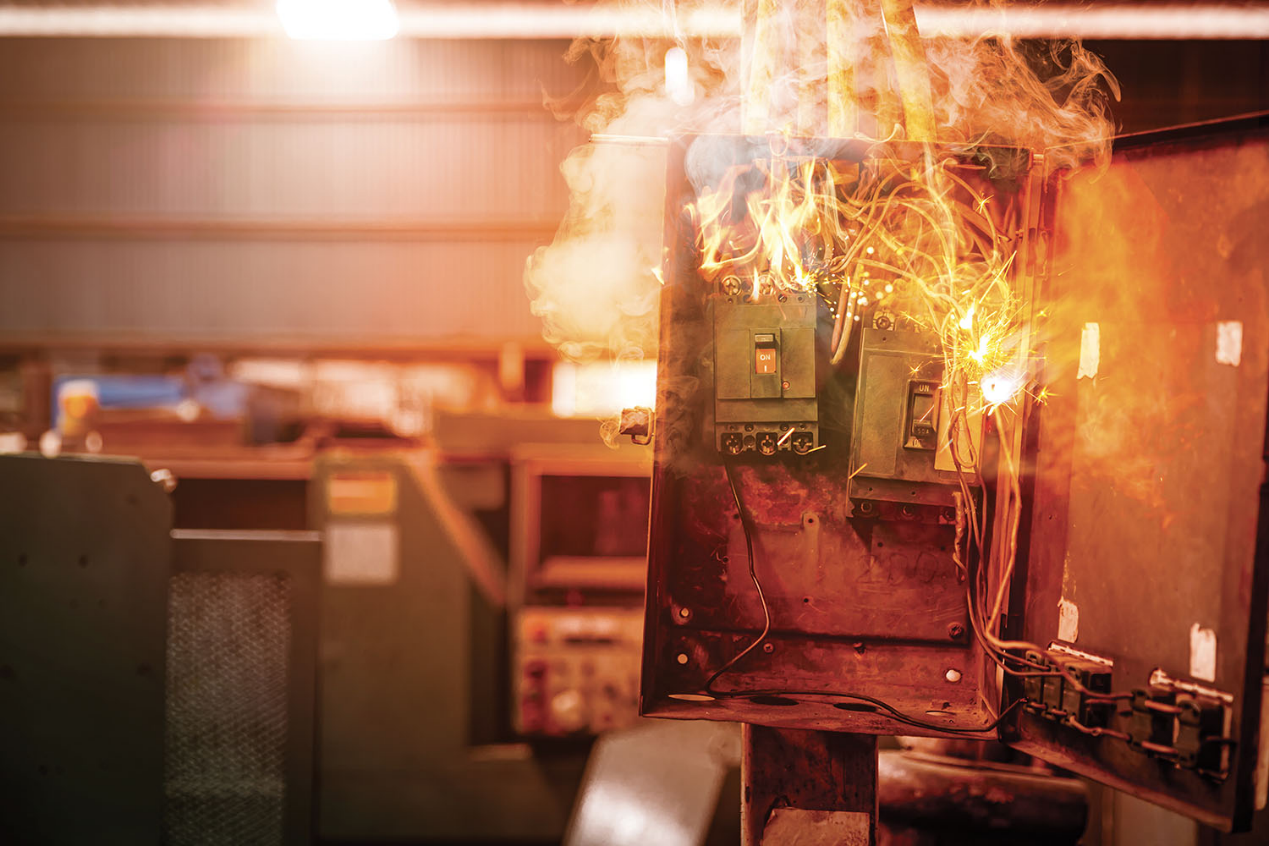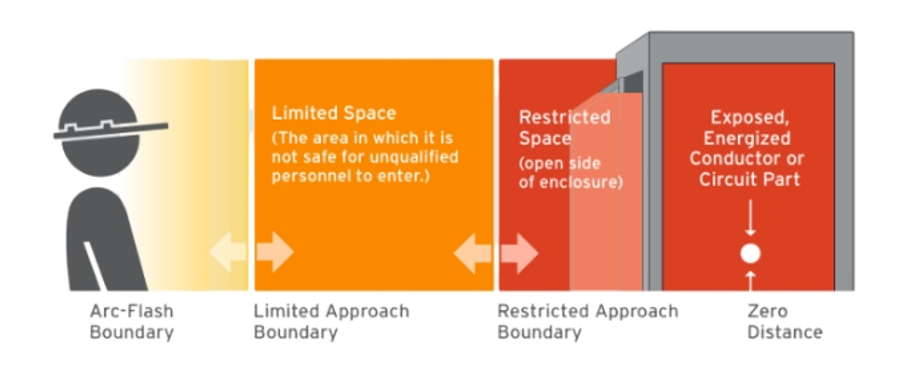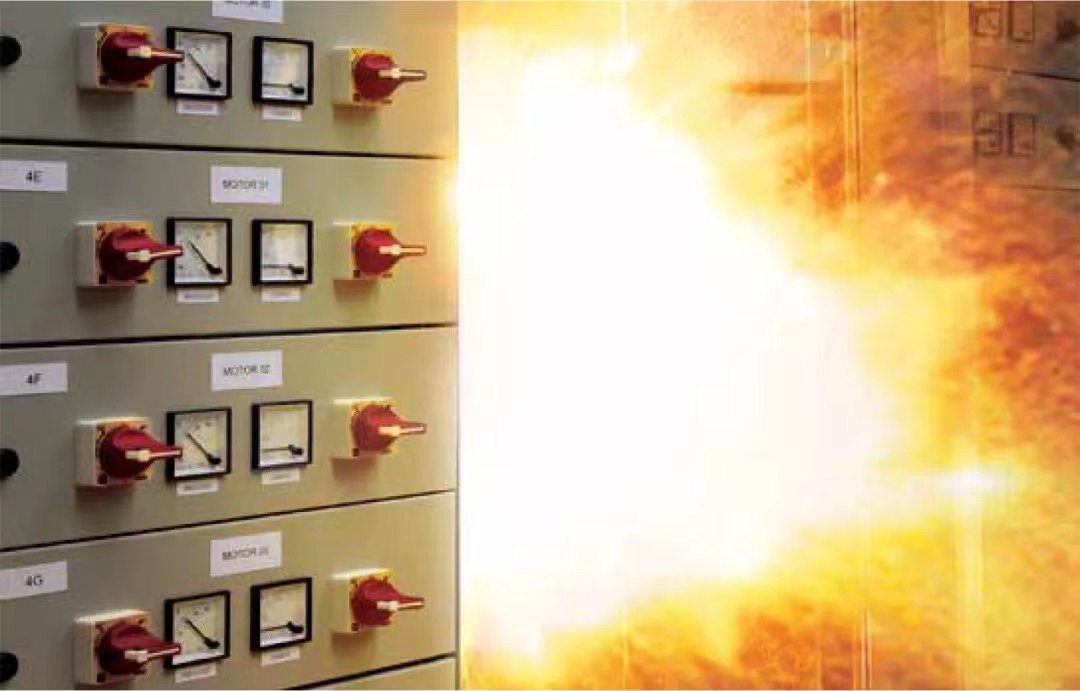
Arc Fault vs Arc flash – What’s the Difference?
Arc Fault and Arc Flash are two different but

Do you know what is arc flash? This article will introduce you what is the definition of arc flash, what is switchgear arc flash, what can cause arc flash, what cause arc flash, when does an arc flash occur, what are the arc flash boundaries, dangers of arc flash, and how to prevent arc flash.
What is an electrical arc flash? Arc flash, called electrical arc flash or arc fault, is a flashover of electric current. An arc flash is a bright spark or flash that is produced by the continuous discharge of high current across the air gap between two conductors. An electrical arc flash is typically caused by a short circuit in electrical equipment such as inductors, cables, switches, and other essential electrical apparatus.
Switchgear arc flash refers to the arc discharge phenomenon that occurs in the switchgear. Arc flash is the process in which electric current flows between two conductors in the form of ionized gas. Switchgear arc flash produces strong light, heat, and sound. For example, in switchgear, an arc flash occurs when current flows through the air between one phase busbar and another phase busbar or between one phase busbar and the neutral line or ground.

Arc flashes can vary in intensity and characteristics depending on several factors, including the electrical system’s voltage, the amount of available fault current, and the specific circumstances surrounding the incident. There are four general types of arc flashes:
The electrical insulation or circuit failure is the most common reason for arc flash. What causes electrical arc flash? There are four factors in the following:
Electrical Equipment Failure can cause an arc flash. For example, insulation breakdown, aging components, or insulation materials deterioration can trigger an arc flash. Overcurrent, Short Circuits, or overloads of the electrical equipment can cause an arc flash too.
Human Error causes arc flash. For example, improper handling, accidental contact with energized components, improper installation, or unauthorized modifications or alterations to electrical equipment can cause arc flash.
Environmental factors can cause an arc flash. The environmental factors include corrosion, moisture, chemical exposure, Dust, Debris, or other foreign materials inside electrical equipment.
Poor maintenance causes electrical arc flash. For example, loose electrical connections such as bolts or terminals can cause arc flash
Want to know when does arc flash occur? An arc flash can occur during maintenance or repair, either when the electrical equipment is not properly de-energized or is “de-energized” beforehand. In other words, an arc flash can occur while the electrical equipment is energized.
120 volts is the common minimum voltage at which an arc flash occurs. Industrial switchgear occurs arc flash at voltages hundreds of thousands of times higher than this.
Arc-Flash Boundary is the distance from an arc fault. The arc flash boundary can protect an employee from second-degree burns. How do you determine the boundary? NFPA 70E gives four methods used by the Institute of Electrical and Electronics Engineers (IEEE) standard 1584 for determining a boundary.

What is an arc flash hazard? Arc flash is dangerous for both the property and the people nearby. Arc flash will cause fire, and worker injuries such as skin and body burns, auditory and eyesight damage, etc. After the arc flash occurs, the nearby electrical equipment will be damaged too.
Preventing arc flash is crucial to ensuring the safety of personnel and electrical equipment. What to do for arc flash? You can adopt proactive safety measures for workers and electrical equipment.
As for workers, you can wear Personal protective equipment PPE such as arc flash clothes, gloves, shirts, pants, boots, a face shield, etc. Besides, you can train workers in risk assessment or arc flash knowledge. Moreover, you can properly label arc flash labeling for your equipment to notice workers adopt arc protection measures.
As for electrical equipment, firstly, regularly inspect and maintain equipment to make sure that electrical equipment is in good working condition. For example, replace aging or damaged parts on time. Secondly, use Arc Flash Suppression Devices such as arc flash suppressors to reduce the occurrence and spread of arc flash. Based on the characteristics and loads of the circuit, you can choose arc flash relays, circuit breakers, fuses, and protective switches to avoid arc flash.
Related Articles

Arc Fault vs Arc flash – What’s the Difference?
Arc Fault and Arc Flash are two different but

Application of Arc Protection Device in Hydropower Stations
The arc protection device is mainly used for the





